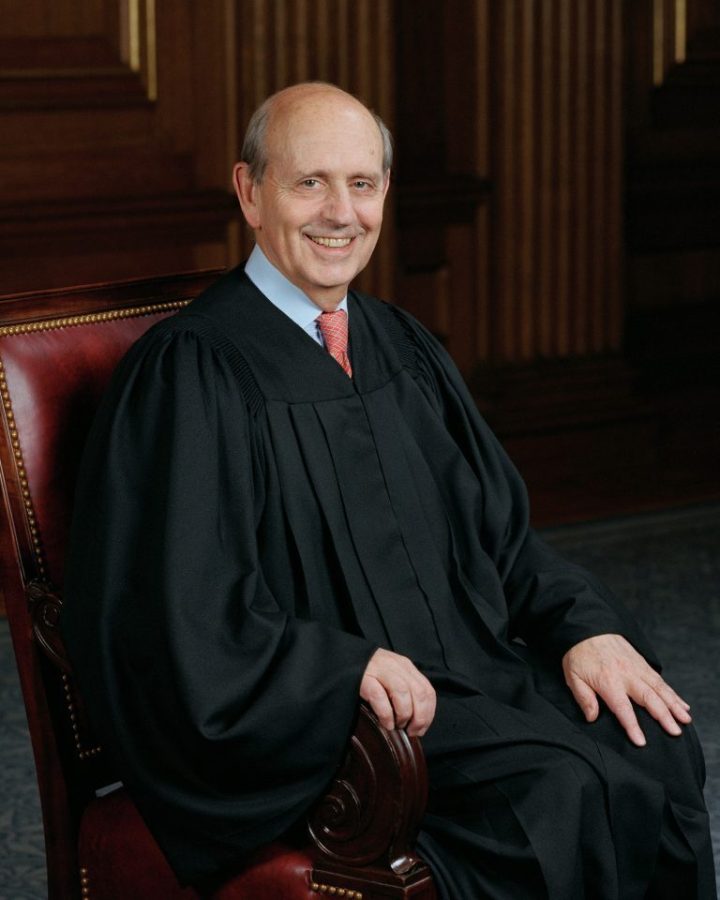Changes in SCOTUS Reflect Court’s Partisanship
The Supreme Court has been through many changes in the last decade. The loss of beloved Supreme Court Justice Ruth Bader Ginsburg, the appointment of three new justices, all of which were appointed and confirmed under one presidency and a new supermajority of six right-leaning Supreme Court Justices are just a few of the monumental changes. In one decade, the dynamic on the Supreme Court bench has entirely shifted, and now it’s about to change again.
Justice Stephen Breyer has announced his retirement, and now President Joe Biden has said he will name his nominee to replace him by the end of February. In Breyer’s resignation, Biden will now have the chance to appoint someone who will serve for decades and shape America’s legal landscape for years to come. It also brings to mind one of his campaign promises: nominate a Black woman to serve on the Supreme Court. Whomever Biden chooses will be the first Black woman to serve on the Court; the occasion is momentous and historical.
The process to appoint and confirm a Supreme Court Justice is filled with partisan motivations and has led to the incredibly partisan shift on the Court. Still, it’s not entirely indicative of the Court being biased to one political party or other.
On both sides of the bench, justices have commented on the partisanship of the Supreme Court. Justices Barrett and Breyer claim that the Court isn’t partisan, but rather that the public opinion is. They also posit that judicial philosophies are different and don’t align with political parties. Though this may be true, political parties will want different judicial philosophies that confirm or favor their stance, even if they don’t directly align with parties. Breyer has said that his retirement decision has no partisan motivation, but should we believe that? Even if the judges don’t believe the Court is partisan, the process that puts them on the bench certainly is.
The last three judge appointments alone are enough to show the political process and issues that arise in the selection and confirmation of Supreme Court justices.
Donald Trump appointed Neil Gorsuch after the Republican-led Senate denied doing a hearing or voting on Merrick Garland (Obama’s nominee to the bench) due to the upcoming election; this ultimately led to a 14-month vacancy on the Supreme Court. Brett Kavanaugh had an incredibly contentious and publicized confirmation after accusations of sexual assault, even though the Senate eventually confirmed him. The last justice to be confirmed, Barrett, showed the total hypocrisy of the Republican-led Senate as they pushed through her appointment and confirmation process weeks before the election after claiming a Garland appointment was too close to the election. There is a level of hypocrisy and bias in appointing and confirming Supreme Court nominees that is entirely dependent on who holds power in the Senate.
Even Breyer’s choice to retire has partisan implications as well. It is practiced and encouraged for Supreme Court justices to retire when a president who shares their values is in office to nominate someone and ensure that the legacy continues. In an interview with the New York Times, Breyer essentially confirms that this is part of his thinking on when to retire. In the interview, he speaks about advice that Justice Antonin Scalia gave him, saying, “[Justice Scalia] said, ‘I don’t want somebody to be appointed who will just reverse everything I’ve done for the last 25 years … That will inevitably be in the psychology [of the decision].”
Breyer is choosing to retire because he knows that the Democratic Party will appoint someone who will continue his legacy and is close to his judicial philosophy. Even if they are different, the actions of an individual judge can have partisan implications. He’s chosen this time because it gives Biden and the Democratic-led Senate ample time to find a nominee and confirm them before the midterm elections in the fall.
Currently, the Democratic majority is razor-thin, with Vice President Kamala Harris coming in to break the tie between the two sides. The midterm elections have left an air of uncertainty around who will lead the legislative branch, making now the best time to confirm a Supreme Court Justice, and Breyer knows it. His choice to retire is an inherently partisan act.
Our Constitution is set up with checks and balances. Yes, the Supreme Court having life appointments alleviates justices from worrying about having political or public favor, but the people who appoint them do. It’s rare to have so much change in the Court in such a short span of time; it’s understandable to feel like the Court has become partisan as three judges get appointed under the same president with similar judicial philosophies. However, the process of appointing a justice and the justice being on the bench are entirely different. Let’s keep that in mind as we look to the Court as they review major cases and consider their decisions in this light, but also look at the Supreme Court nominee and their confirmation process.
Samantha Scott, FCRH ’24, is an international political economy major from Columbus, O.H.










































































































































































































